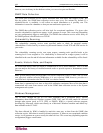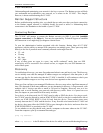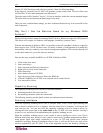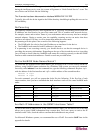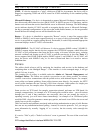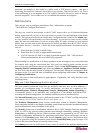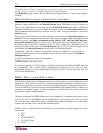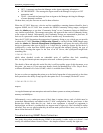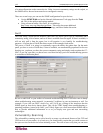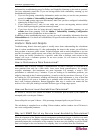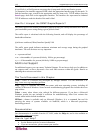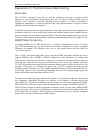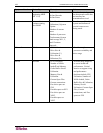
APPENDIX B: TROUBLESHOOTING 115
Of these five, Raritan only uses three:
• GET - A message sent from the Manager to the Agent requesting information
• GET RESPONSE – The message the Agent sends to the Manager in reply to a GET
transaction, and
• TRAP – An unsolicited message from an Agent to the Manager advising the Manager
of some abnormal condition
Of these three, only the first two are used in data collection.
When the CC-NOC discovers a device and the capabilities scanning daemon identifies that it
supports SNMP, the CC-NOC then consults the SNMP Community String ranges, configured
under the Admin page, to see what “Community String” to use. Community Strings in SNMP are
very similar to passwords. The manager must query the agent with the correct Community String,
or the request is denied. Unfortunately, the Community Strings are transmitted in plain text, so
their use as a password is rather limited, but that’s another story for another day…
Once the CC-NOC determines the appropriate Community String to use, which you can provide
in either the CC-NOC First-time Configuration Wizard, or via the Edit the SNMP Ranges page
under the Admin tab, Network Management Configuration, it will query the newly discovered
device to determine what type of device it is. It does this by sending a request for the device’s
sysObjectID, a value that most SNMP agents will provide that uniquely identify the type of
device that is hosting that agent. In the case of an NT Server, that sysObjectID might look
something like:
.1.3.6.1.4.1.311.1.1.3.1
which when decoded, reveals an embedded series of qualifiers that look something
like: .iso.org.dod.internet.private.enterprises.microsoft. software.systems.os.winnt
The details of how and why this works like this is well beyond the scope of this document, so at
this point - just trust us. If you want more details, check out Marshall Rose’s The Simple Book,
or Mauro & Schmidt’s Essential SNMP, which is available from O’Reilly.
So just as we have a mapping that points us to the kind of agent that is being queried, so also does
that system have the ability to map specific data points for us. For example, on that NT server:
.1.3.6.1.4.1.311.1.1.3.1.1.1.1
maps to
.iso.org.dod.internet.private.enterprises.microsoft.software.systems.os.winnt.performance.
memory.availableBytes
Unfortunately, every vendor puts most of their data in unique places, each of which must be
researched independently and added to the CC-NOC configuration. But the good news is that
Raritan has already done that for you. And as new equipment is released or equipment is
deployed that we haven’t yet addressed, our support team is right on it. Don’t be afraid to utilize
our team! They are very good at what they do and can make you look like a hero, even if you don’t
know all the intricacies of SNMP.
Troubleshooting SNMP Data Collection
One handy thing about troubleshooting SNMP is that usually, it either works or it doesn’t. And
usually, the solution follows Occam’s Razor—the simplest solution is usually the right one.




